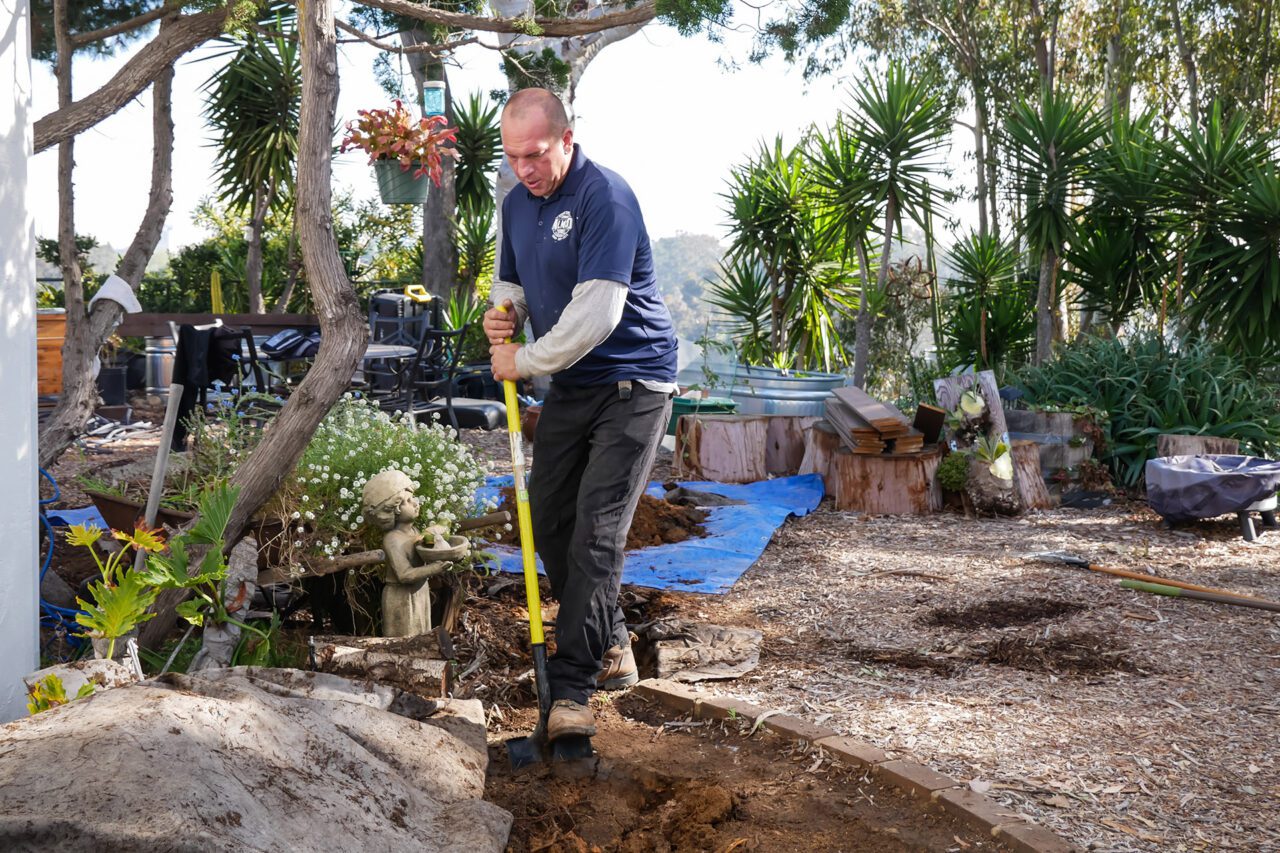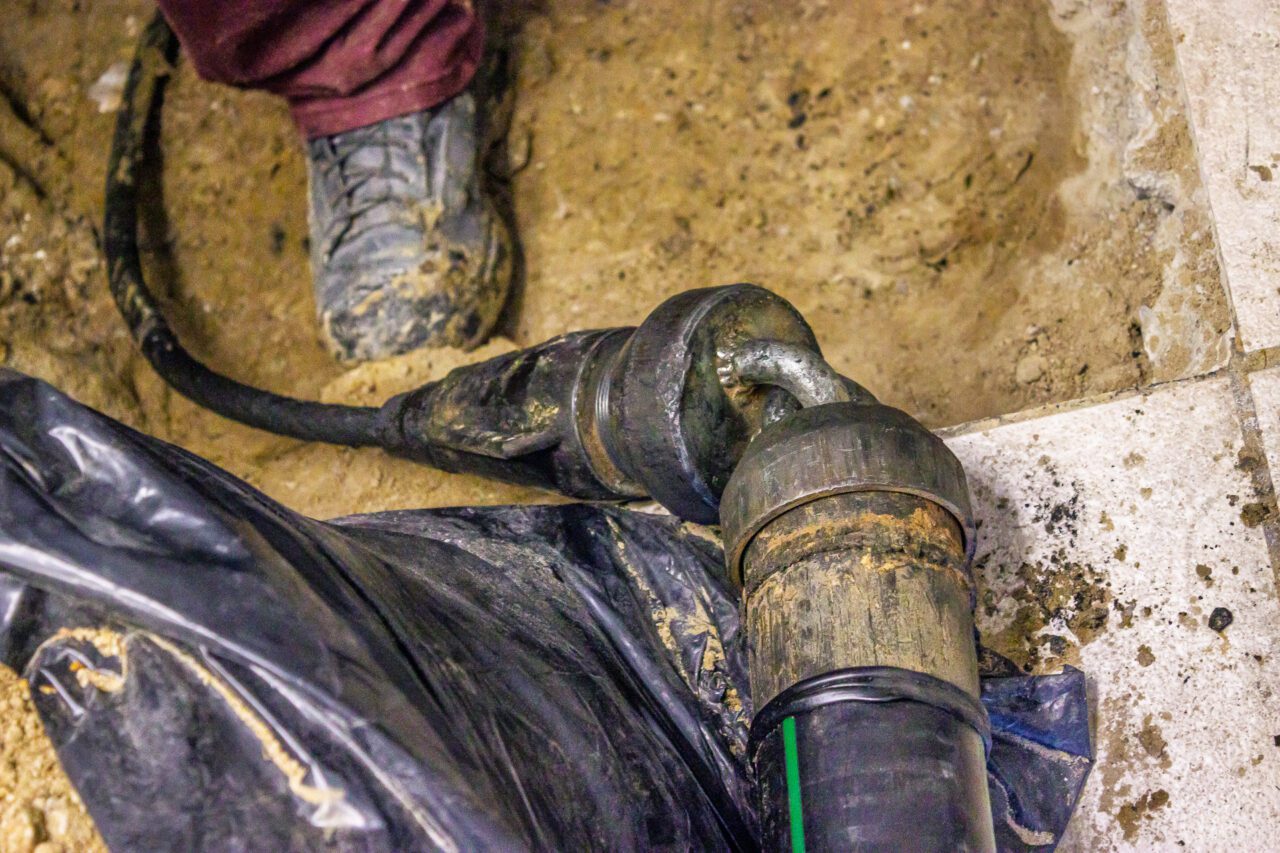Trenchless vs. Traditional Sewer Repair in San Diego: Cost & Repair Time Comparison
Your choice between trenchless and traditional sewer repair methods can significantly impact your time, budget, and property condition. Although both methods solve the same problem, they differ greatly in cost, duration of repairs, and level of disruption. Until recently, the primary repair approach was the traditional trench method, which required large-scale excavation. Trenchless techniques eliminate sewer pipes defects with minimal surface infrastructure disruption, which is especially important for dense urban landscapes.
This article breaks down the key differences between the two methods, especially the speed of completion and cost, to help San Diego residents make the right decision.
Traditional Digging Method: Features & Process Overview
The traditional method of sewer or drain repair requires excavating a trench along the entire length of the damaged pipe in order to expose it for repair or replacement. This process usually requires heavy machinery, manual labor, and a lot of time. Once the pipe has been repaired or replaced, the trench is filled in and the surface (soil, pavement, concrete, etc.) is restored.
Traditional digging has two main advantages: simplicity and accessibility. It does not need complex equipment and can be used with pipes of any diameter, material, or configuration.
It allows an accurate assessment of soil conditions and hidden defects in pipes, which is important in cases of serious damage or large-scale replacement of the sewer system.
However, it is associated with significant time and resource consumption, extensive surface and environmental damage, and inconvenience to residents due to traffic congestion, noise, and dust.
Although it is an older approach, traditional digging is still used in San Diego when trenchless access points are not possible or when major changes to pipe alignment are needed.
Trenchless vs. Trenching: A Comparison of Repair Costs & Time
The cost and duration of repair work on sewer networks depend on many factors. The main ones:
- The length and diameter of the pipe
- The depth of its installation
- The type of coating
- The difficulty of access to the repair site
- The need to restore the surface and others
For greater clarity, the stages of trenching and trenchless repair methods are compared below.
| Work Stage | Trenching | Trenchless |
|---|---|---|
| 1. Initial Site Excavation | Requires full excavation along the sewer pipe length, typically disrupting roads, sidewalks, and green areas | Not required. Access is gained through existing manholes or small localized pits |
| 2. Utility Detection & Coordination | Necessary to avoid damage to other buried infrastructure. May involve delays | Also required, but only for pipe bursting method |
| 3. Sewer Pipe Condition Diagnostics | Often skipped or based on assumptions during excavation | Mandatory step involving CCTV inspection to assess the pipe’s condition before repair |
| 4. Traffic & Surface Disruption | High impact: road closures, traffic control, noise, dust, and detours are common | Minimal impact: work is localized and can often proceed without full road closures |
| 5. Pipe Access Preparation | A trench is excavated along the entire segment to be replaced | Only small access points or manholes are needed to insert equipment or liners |
| 6. Repair or Replacement Process | The damaged pipe is removed and replaced with a new segment. Labor-intensive and time-consuming | Uses internal liners (CIPP), spray coatings, or pipe bursting to renew the pipe without removing it |
| 7. Surface Restoration | Essential stage after the pipe replacement: road, pavement, landscaping must be restored | Not required unless small pits are made, which are easy and inexpensive to refill |
| 8. Repair Duration | Typically 7–10 days per segment, possibly more with weather or access complications | 1–3 days on average, depending on pipe length and method used |
| 9. Environmental & Residents Impact | High: excavation causes noise, emissions, and public inconvenience | Low: quiet, clean process with less pollution and faster completion |
| 10. Equipment & Workforce Requirements | Conventional construction equipment and general laborers can complete the work | Requires trained personnel and specialized machinery for lining or bursting |
| 11. Regulatory & Project Approvals | Well-known method with existing permits | May require updated regulations, special approvals, or new and documentation standards |
Example of Sewer Repair with Estimates of Trench & Trenchless Method
Trench Method
Now, consider replacing approximately 20 feet of sewer line from the house to the front yard as part of a plumbing rehabilitation project. This work includes replacing the bathroom branch, the main line (up to 50 feet), and the kitchen branch line entirely.
In order to preserve the existing kitchen flooring, the kitchen drain line will be rerouted around the perimeter of the house and garage. It will then be connected directly to the main sewer line at the front of the property.
The following traditional steps will be taken:
- Remove the toilet branch line without disturbing the existing tub branch
- Use jackhammers and excavation equipment in the bathroom to access and replace the toilet drain
- Tunnel under the slab where necessary to replace the affected sections
- Remove the existing kitchen flooring to fully expose the drain area
- Jackhammer, trench, and replace the kitchen drain line
- Install a new kitchen floor after completing the plumbing work
- Excavate from the house to the front yard and tunnel where needed to connect all drains to the city main sewer line
The total distance of the trenching and tunneling is approximately 45–60 feet, including the work behind the house, under the kitchen, and across to the front yard.
The estimated plumbing-only cost is $18,000–$22,000. This price includes plumbing labor and materials only. Restoration work, such as installing new flooring in the bedroom, installing drywall in the bathroom, patching the concrete, and landscaping, is not included.
Trenchless Method
For this project, pipe bursting is the ideal method for sewer replacement because it is modern and minimally invasive. This approach provides the same quality and durability as traditional trenching, while significantly reducing restoration costs and home disruption.
Pipe bursting scope of work:
- Create a jackhammer access point in the bathroom
- Excavate two additional access holes: one in the front yard and one behind the kitchen
- Through these three access points, we will install a brand-new SDR-17 HDPE sewer pipe to fully replace the existing line
- Connections will be made to the city sewer, kitchen branch, and bathroom branch.
Cost Comparison
| Trenching Method | Pipe Bursting Method |
|---|---|
| Plumbing cost: $18,000–$22,000 | Plumbing with pipe bursting equipment: $13,000–$15,000 |
| Full restoration (floors, concrete, drywall, landscape): $8,000–$10,000+ | Minor stucco, tile, and drywall repair: $2,000–$3,000 |
| Total Estimated Cost | |
| $30,000+ | $15,000–$18,000 |
Advantages of Pipe Bursting
- No need to jackhammer or destroy flooring throughout the house
- No concrete patching around the house or in the driveway
- No disturbance to bedroom areas
- Minimal drywall and tile work is required (only in the bathroom and a small area of stucco outside the kitchen)
- A significantly less invasive and faster restoration process
So, the trenchless method demonstrates more efficient use of resources, reducing additional costs associated with infrastructure restoration and minimizing inconvenience for residents and the community as a whole.
The traditional trench method is still relevant for large-scale damage or complex pipeline geometry. In such situations, the method’s simplicity and versatility offset the disadvantages associated with the duration and scale of excavation work. However, trenchless technologies for sewer network repair offer a modern, promising solution that is fast, environmentally friendly, and minimizes interference with the surroundings.


